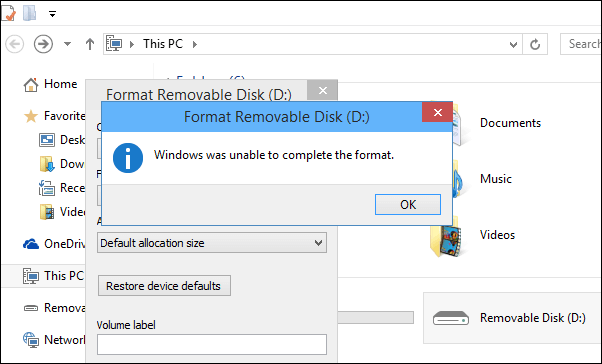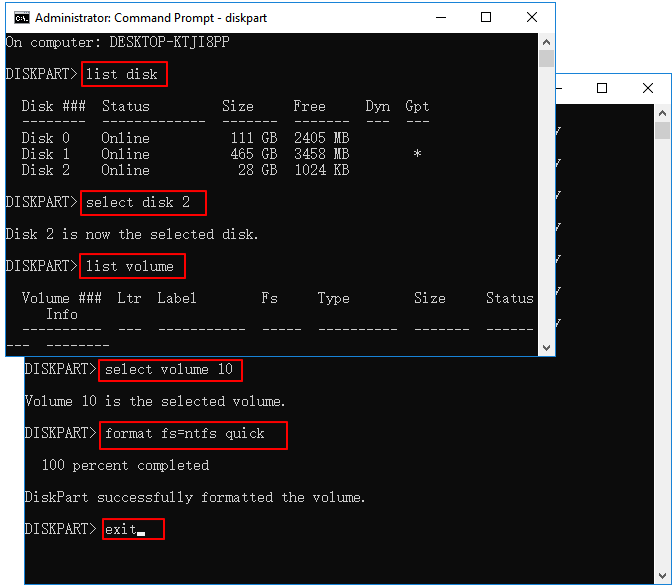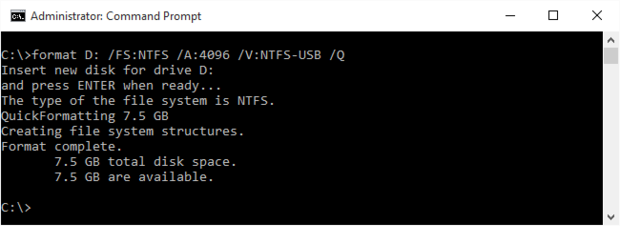

- #How to reformat a usb drive to ntsf on windows 10 how to#
- #How to reformat a usb drive to ntsf on windows 10 movie#
- #How to reformat a usb drive to ntsf on windows 10 portable#
- #How to reformat a usb drive to ntsf on windows 10 free#
Step 2: Right-click on the USB drive shown in My Computer and select “Format”. You can also find the USB under Disk Drives in Device Manager (right-click on My Computer -> Manage). If it doesn’t appear, you can open My Computer and see if the USB is detected as a newly mounted volume. Once it is recognised, you should see an Autoplay dialogue box pop up asking you to choose the next action. Step 1: Plug in the memory stick into your computer and allow it to be detected. Here’s the procedure to format USB Drive to NTFS / FAT / FAT32 / exFAT:

So if on plugging your USB into your car’s music player you’ve faced an error saying – “cannot read”, check its file system and change it. FAT or FAT32 is also the default file system most music players in cars recognise.
#How to reformat a usb drive to ntsf on windows 10 how to#
How to format USB Flash Drive to FAT / FAT32 / NTFS / exFAT using Windows Explorer?įAT or FAT 32 file system is the option selected by default for formatting a USB flash drive on Windows XP. For example, if you use the USB on multiple operating systems, going for FAT would be better. Other than that, you should choose the format that suits your work. So if you’re USB flash drive which has a capacity greater than 32GB, you should select NTFS or exFAT.

Ability to read / write files larger than 4GB.Ability to create partitions larger than 32GB.

If you select exFAT file system, you get:
#How to reformat a usb drive to ntsf on windows 10 free#
Less space is dedicated to the file system data to allow more free space to hold other data.Compatibility with almost all operating systems.Faster performing USB owing to write operations lesser.Note: For USB flash drives with capacity larger than 32GB, FAT / FAT32 formatting option is not available. Ability to read / write files larger than 32GB and up to maximum partition size.Ability to create permissions for individual files and folders.Compressed data so as to save disk space.Increased reliability and security with file encryption.Additionally, here are the benefits of each of these file systems to help you make your choice. You should choose one that suits your USB purpose as well as target environment. In most Windows systems, while formatting a USB 4 file system choices are presented to you – NTFS, FAT, FAT32 or exFAT. When it comes to formatting a USB drive, which format should you go for – FAT or NTFS? Or any other? Moreover, how can you change the format size of your USB drive from FAT to NTFS to exFAT or FAT32? Let’s answer these questions one at a time. Which file system should I choose for formatting my USB Drive? When it comes to formatting a USB drive, which format should you go for – FAT or NTFS? Or any other? Moreover, how can you change the format of your USB drive from FAT to NTFS to exFAT or FAT32? Let’s answer these questions one at a time. One important thing to remember is always taking a backup of your data before beginning the formatting a USB drive procedure. Formatting is also a good way to rid the memory stick of unwanted errors or virus/malware programs. Each time you wish to use them for a unique purpose, it requires cleaning them and sometimes even formatting them to a file system suited to the target environment.
#How to reformat a usb drive to ntsf on windows 10 movie#
But these little devices pack quite a punch they can double up as your mobile movie library, photo collection, backup drive, OS boot volume, or just a way to transfer stuff from one computer to another.
#How to reformat a usb drive to ntsf on windows 10 portable#
USB flash drives are the little stick-like devices that we carry along in our pockets as portable external storage.


 0 kommentar(er)
0 kommentar(er)
